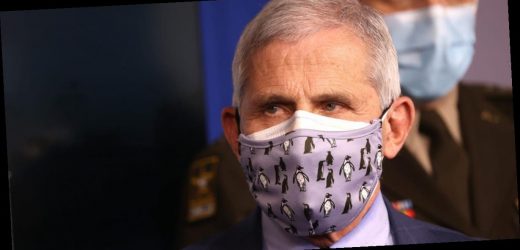- The more contagious — and possibly deadlier — coronavirus variant first found in the UK could become dominant in the US by March.
- But the US might not finish vaccinating its most vulnerable populations until April.
- Relaxed restrictions may allow the variant to run rampant, leading to hospitalizations and deaths.
- Visit the Business section of Insider for more stories.
It took just three months for the more contagious coronavirus variant known as B.1.1.7 to become dominant in the UK.
Scientists forecast a similar fate in the US.
The first US cases of B.1.1.7 were confirmed in December, though the patients’ lack of travel history indicates the strain was spreading earlier. The variant now represents around 4% of the country’s coronavirus cases. On Saturday, Dr. Rochelle Walensky, director of the Centers for Disease Control and Prevention, said B.1.1.7 could become the nation’s dominant coronavirus strain by March.
Thankfully, both the Pfizer and Moderna vaccines seem to be effective against the variant, but most Americans haven’t been vaccinated yet: About 15 million people in the US — less than 5% of the population — have received the full two-dose regimen so far.
“The US is now in a race between B.1.1.7 and the pace of vaccinations,” Ian Shepherdson, chief economist at Pantheon Macroeconomics, wrote in a report last week.
In a study that’s still awaiting peer review, California researchers recently estimated that B.1.1.7 cases were doubling every 10 days in the US. New coronavirus cases currently hover at around 87,000 per day, on average.
Shepherdson’s model predicts that without vaccines, new B.1.1.7 cases in the US could reach 400,000 per day by the end of April.
“The restrictions applied across the US right now, on average, are not tight enough to control B.1.1.7,” he wrote.
Shepherdson added that “any spring surge in cases will eventually be crushed by vaccination,” but said “the potential for a delay in reopening, of two or three months, is very real.”
Indeed, public-health experts warn that the US would have to maintain — or perhaps tighten — lockdown restrictions to keep hospitalizations and deaths due to B.1.1.7 at a minimum. That may be especially true if, in addition to being more transmissible, the variant is 30% to 70% deadlier than the original strain, as UK scientists recently reported.
‘We are nowhere out of the woods’
New coronavirus cases are declining in all but three US states, but new variants could reverse that promising trend.
A USA TODAY analysis found that 29 states are currently easing lockdown restrictions, while three — Iowa, Florida, and Missouri — have lifted restrictions almost entirely. Businesses are mostly open across 42 states, and 12 states have no mask requirements at all, according to a New York Times analysis. Only two states, Virginia and North Carolina, have stay-at-home orders in place.
That puts the US in a precarious position from now until July, when it’s expected that every US adult will have access to a coronavirus shot. (That milestone could arrive sooner if the Food and Drug Administration authorizes a third coronavirus shot from Johnson & Johnson.)
“My concern right now, because B117 is more transmissible, is that feeling of people wanting to return to normal life and maybe go places and do more things,” Dr. Cindy Prins, an epidemiologist at University of Florida, told Insider. “That worries me, just because you’re more likely to come into contact with someone who’s infected.”
Dr. Anthony Fauci, director of the National Institute of Allergy and Infectious Diseases, has suggested that the US won’t finish vaccinating its vulnerable populations — including the elderly, essential workers, and those with preexisting medical conditions — until April. By then, it’s possible B.1.1.7 will have been the dominant strain for at least a month.
“We are nowhere out of the woods,” Walensky told CBS’ “Face the Nation” on Saturday. “If we relax these mitigation strategies with increasing transmissible variants out there, we could be in a much more difficult spot. So what I would say is now is the time to not let up our guard.”
B.1.1.7 could raise the threshold for herd immunity
California researchers recently estimated that B.1.1.7 is 35% to 45% more transmissible than other strains spreading in the US. That means it could take the US longer than previously thought to reach herd immunity — the threshold beyond which the virus can no longer spread easily from person to person.
Scientists calculate herd immunity based a virus’ reproductive value: the number of people that one sick person infects, on average. Researchers generally estimate the original coronavirus’ reproductive value to be between 2 and 3 (when left unchecked by vaccines or public-health measures).
That means around 50% to 67% of the US population would need to have some immunity to the virus — whether through vaccination or natural infection — to achieve herd immunity. The country is “nowhere near” that, Prins said.
But studies have shown that B.1.1.7 may increase the virus’ reproductive value by 0.4 to 0.9. In that case, the threshold for herd immunity would be higher: up to 75% of the US population would likely need to develop some form of immunity.
“When you have a new variant of COVID, if the reproductive number is higher, that means that the virus is going to be able to spread even if fewer people are susceptible,” Rahul Subramanian, a data scientist at the University of Chicago, told Insider.
What’s more, the longer it takes to bring the US outbreak under control, the more deaths will occur along the way. In a few months, the California researchers wrote, new variants like B.1.1.7 “will likely have devastating consequences to COVID-19 mortality and morbidity in the US.”
“If we really want to allow the vaccine to do its job,” Prins said, “we have to do our part upfront and stop spreading this around.”
Get the latest coronavirus business & economic impact analysis from Business Insider Intelligence on how COVID-19 is affecting industries.
Source: Read Full Article

